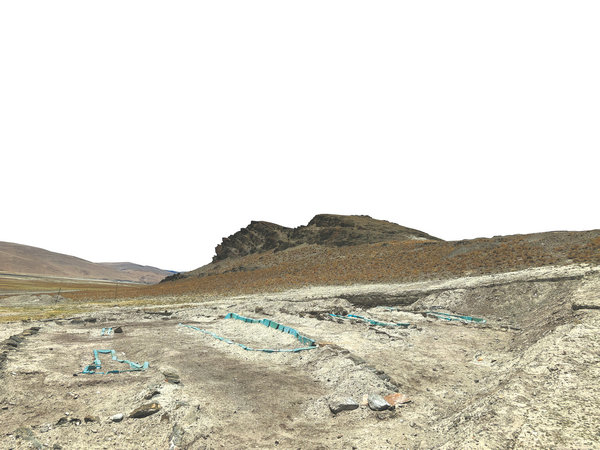

Bigger picture
In April, Mapu Tsho site was included in China's top 10 archaeological findings for 2024 through a selection organized by the National Cultural Heritage Administration.
Wang Wei, a veteran archaeologist with Chinese Academy of Social Sciences and a member of judging panel, says that the site spans a period divided into four stages, ranging from 5,000 years ago to 2,000 years ago, a crucial time for formation of early civilizations in the Central Plains or the Yangtze and Yellow River regions.
"Our understanding of Xizang used to be quite fragmented, focusing on specific regions or aspects. However, the four distinct periods over this long time span reveal noticeable changes in burial structures, with clear social differentiation emerging around 3,300 to 3,000 years ago," Wang says.
This sheds light on the evolution of settlements, their layouts, distinctive features, and particularly social stratification in the region, Wang adds.
By studying the site, close connections with present-day Sichuan province (neighboring Xizang), and the upstream Yangtze River are evident, showcasing a history of interaction, exchange and integration, he says, adding that many of the burial structures discovered are entirely new findings, providing a fresh perspective in this evaluation.
"Furthermore, through interdisciplinary approaches involving ancient DNA, archaeology, and analysis of flora and fauna, various methods have been employed to reveal the adaptability, complexity and continuity of human activities at altitudes above 4,400 meters on the plateau," Wang says.
He notes that the discovery therefore contributed invaluable insights into understanding the evolution of high-altitude human populations on a global scale.
Archaeology in Xizang has also seen unprecedented progress over the past decade, largely due to government support, as well as initiatives led by the National Cultural Heritage Administration. A critical development is the release of 2021-2035 Xizang Archaeological Work Plan.
"This plan outlines the future direction for Tibetan archaeological work, with the Mapu Tsho site highlighted as a key project," he says. "This site provides an invaluable sample for studying the adaptation processes of early humans to extreme environments."